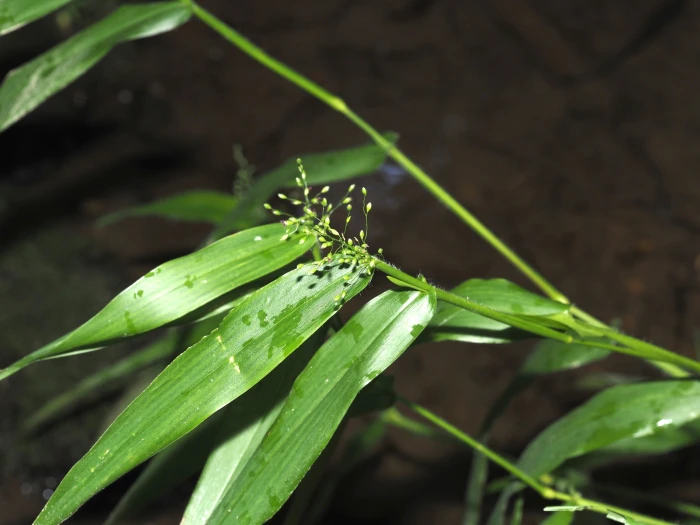Broadleaf Rosette Grass
(Dichanthelium latifolium)
Broadleaf Rosette Grass (Dichanthelium latifolium)
/
/

Jeff Clark
CC BY 4.0
Image By:
Jeff Clark
Recorded By:
Copyright:
CC BY 4.0
Copyright Notice:
Photo by: Jeff Clark | License Type: CC BY 4.0 | License URL: http://creativecommons.org/licenses/by/4.0/ | Rights Holder: Jeff Clark | Publisher: iNaturalist | Date Created: 2022-06-12T12:33:52-07:00 |

























Estimated Native Range
Climate Requirements for Fort Worth, Texas
| This Plant | Your Site | Plant Suitability for Your Location | ||
|---|---|---|---|---|
| • Precipitation | 14" - 74" | 33" | Your precipitation may be insufficient for this plant. Irrigate N" / year. | Irrigate N" / year |
| • High Temp. | 74°F - 101°F | 97°F | Your summer temperatures are normal for this plant. | Excellent |
| • Low Temp. | -3°F - 73°F | 33°F | Your winter temperatures are normal for this plant | Excellent |
This plant should grow well at your location with about N inches per year (Y minutes per month) of irrigation.
Summary
Dichanthelium latifolium, commonly known as Broadleaf Rosette Grass, is a perennial grass that thrives in a variety of habitats including deciduous woodlands, open fields, and savannas across the eastern United States. It is particularly adapted to areas with moist, well-drained soils and is often found in dappled shade environments. Broadleaf Rosette Grass typically grows up to 3 feet tall and forms dense clumps, which provide excellent cover and forage for local wildlife. Its foliage is broad and bluish-green, and the plant produces small, inconspicuous flowers during the late spring to early summer months.
This grass species is valued for its ability to stabilize soil and prevent erosion, making it a suitable choice for restoration projects and naturalized areas. It is also used in wildflower meadows where its hardiness and low maintenance requirements are appreciated. Broadleaf Rosette Grass is tolerant of a range of light conditions from full sun to partial shade, but it prefers partial shade. It is adaptable to various soil types, provided they are well-drained. While it is generally free from serious pests and diseases, it can occasionally suffer from rust or fungal leaf spots.CC BY-SA 4.0
This grass species is valued for its ability to stabilize soil and prevent erosion, making it a suitable choice for restoration projects and naturalized areas. It is also used in wildflower meadows where its hardiness and low maintenance requirements are appreciated. Broadleaf Rosette Grass is tolerant of a range of light conditions from full sun to partial shade, but it prefers partial shade. It is adaptable to various soil types, provided they are well-drained. While it is generally free from serious pests and diseases, it can occasionally suffer from rust or fungal leaf spots.CC BY-SA 4.0
Plant Description
- Plant Type: Grass
- Height: 1.5-2 feet
- Width: 1-2 feet
- Growth Rate: Moderate, Rapid
- Flower Color: N/A
- Flowering Season: Spring, Summer, Fall
- Leaf Retention: Deciduous
Growth Requirements
- Sun: Part Shade
- Water: Medium, High
- Drainage: Fast, Medium
Common Uses
Low Maintenance, Water Garden
Natural Habitat
Deciduous woodlands, open fields, and savannas
Other Names
Common Names: Carolina Witch Grass, Carolina Rosette Grass
Scientific Names: Dichanthelium latifolium, Dichanthelium latifolium, Milium latifolium, Panicum latifolium, Panicum latifolium var. latifolium, Panicum macrocarpon, Panicum schenckii, Panicum schneckii
GBIF Accepted Name: Dichanthelium latifolium